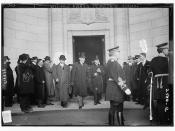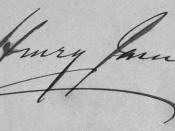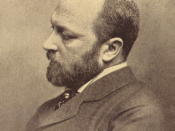Henry James' "The Turn of the Screw" has been the subject of a number of critical papers, lectures, scholarly articles, and debates. Such flow of analytical works is suggestive of the success of the story which has become Henry James's most famous work. It is equally suggestive of the quality the novel has among other pieces of literary works. In fact, there is not much to be invented as far as analysing the story is concerned- throughout the 20th and the beginning of the 21st centuries, the question of whether or not the governess is telling the truth, hence whether or not the apparitions are real, has been the subject of much debate. In this paper, I will examine two interpretations of The Turn of the Screw. The article entitled "The Ambiguity of Henry James," written in 1934 by Edmund Wilson, is one of these two interpretations.
The other article, written in 1947 by Robert B. Heilman, is entitled "The Turn of the Screw, Henry James." This article mainly examines that of Wilson.
Edmund Wilson adopts a Freudian reading of the novella. To him, the ghosts the story talks about are mere illusions seen by the governess who is said to be in a neurotic state. In his article, Robert B. Heilman, however, questions the Freudian interpretation and regards the story as a Christian allegory. The paper in hand undertakes to examine the way the two articles proceed in interpreting the story. This examination will mostly make use of comparison and contrast. The purpose of this examination is to identify the similarities and differences between the two articles as to the points brought to the surface and emphasized by the two critics as well as to trace instances of contradiction between the one article...


